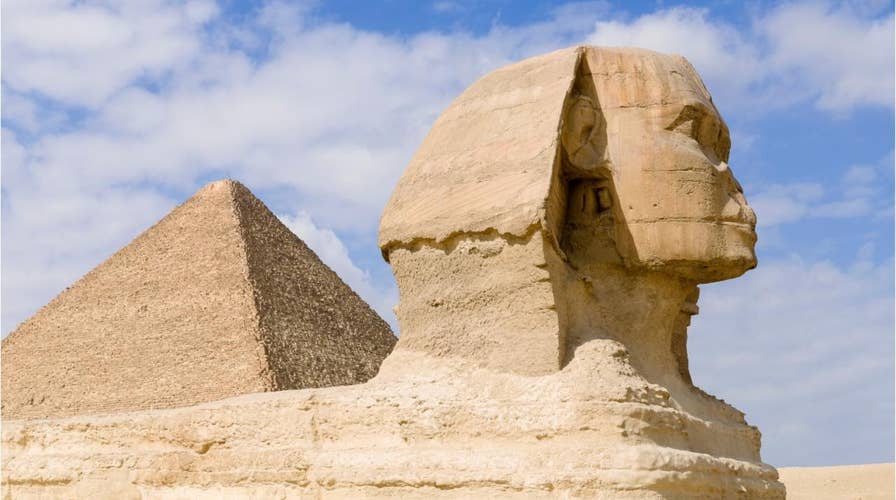Volcanoes helped topple ancient Egyptian empire, study finds
Volcanoes wiped out ancient Egyptian empire
Researchers may have discovered that a series of volcanic eruptions, in addition to low Nile river waters, led to the toppling of the Ptolemaic empire.
Sun-choking debris cast off by volcanoes more than 2,000 years ago starved headwaters feeding the Nile river and hastened the downfall of ancient Egypt’s last kingdom, researchers claim.
Eruptions in the 3rd and 1st century B.C. — including one of the biggest blasts in the past 2,500 years — coincided with crop failures, large-scale revolts and the withdrawal of Egyptian armies from the battlefield, they reported in the journal Nature Communications.
Up to now, researchers had struggled to find an explanation for these events.
“Volcanic eruptions may have had a central role in the eventual collapse of the Ptolemaic dynasty,” the journal noted in a summary.
The findings, the authors said, also highlight the risk today of climate engineering schemes that would combat global warming by injecting billions of tiny particles into the stratosphere — just like a volcano — to block some of the sun’s rays.
Even if so-called solar radiation management lowers the planet’s temperature a notch or two, it could inadvertently cause major disruptions in rainfall patterns.
“Ptolemaic vulnerability to volcanic eruptions offers a caution for all monsoon-dependent agriculture regions,” which today include 70 percent of the world’s population, the authors wrote.
The Ptolemaic empire began in 305 B.C., shortly after the death of Alexander the Great, and ended in 30 B.C. with the suicide of Cleopatra. After that, the region became a Roman province.
The kingdom mostly thrived, nourished by the silt-rich Nile overflowing its banks in summer across a far-flung network of grain fields. An ingenious system of channels and dams stored water after the river receded in September.
VIOLENT UPRISINGS
“When the flood was good, the Nile Valley was one of the most agriculturally productive places in the ancient world,” said Francis Ludlow, a climate historian at Trinity College Dublin and co-author of the study.
But in some years, the river failed to rise, and trouble followed. Why this happened was not known.
Drawing from climate models, Greenland ice cores, and ancient Egyptian writings, researchers led by Joseph Manning of Yale University pieced together a narrative that showed an unmistakeable link with major volcanic eruptions around the world.
In 245 B.C., for example, the ruler Ptolemy III suddenly, and inexplicably, abandoned a successful military campaign against his arch nemesis, the Seleucid Empire, centred in present-day Syria and Iraq.
“This about-face changed everything about Near East history,” Manning said.
Historical records also pointed to simultaneous food shortages due to insufficient flooding of the Nile, as well as violent uprisings in the Ptolemaic Kingdom, which stretched across northeast Africa and parts of the Middle East.
A similar confluence of social upheaval, disease and starvation struck the empire in its final two decades.
Both periods of turmoil, the researchers found, coincided with major volcanic eruptions.
From more recent records, scientists know that the tens of millions of tons of sulphur dioxide particles ejected into the upper atmosphere by a major eruption can prevent monsoon weather from moving far enough north of the equator to thoroughly soak the Ethiopian highlands, the headwaters of the Nile.
This happened in 939 when Eldgja, in Iceland, blew its top, and again in 1783-84, when Iceland’s Laki erupted.
The Islamic Nilometer, a log of Nile water levels since 622, showed a corresponding impact on the river.
“The volcanic eruptions didn’t cause these (social) upheavals on their own,” Ludlow said.
“But they likely added fuel to existing economic, political and ethnic tensions.”
This story originally appeared in news.com.au.




















